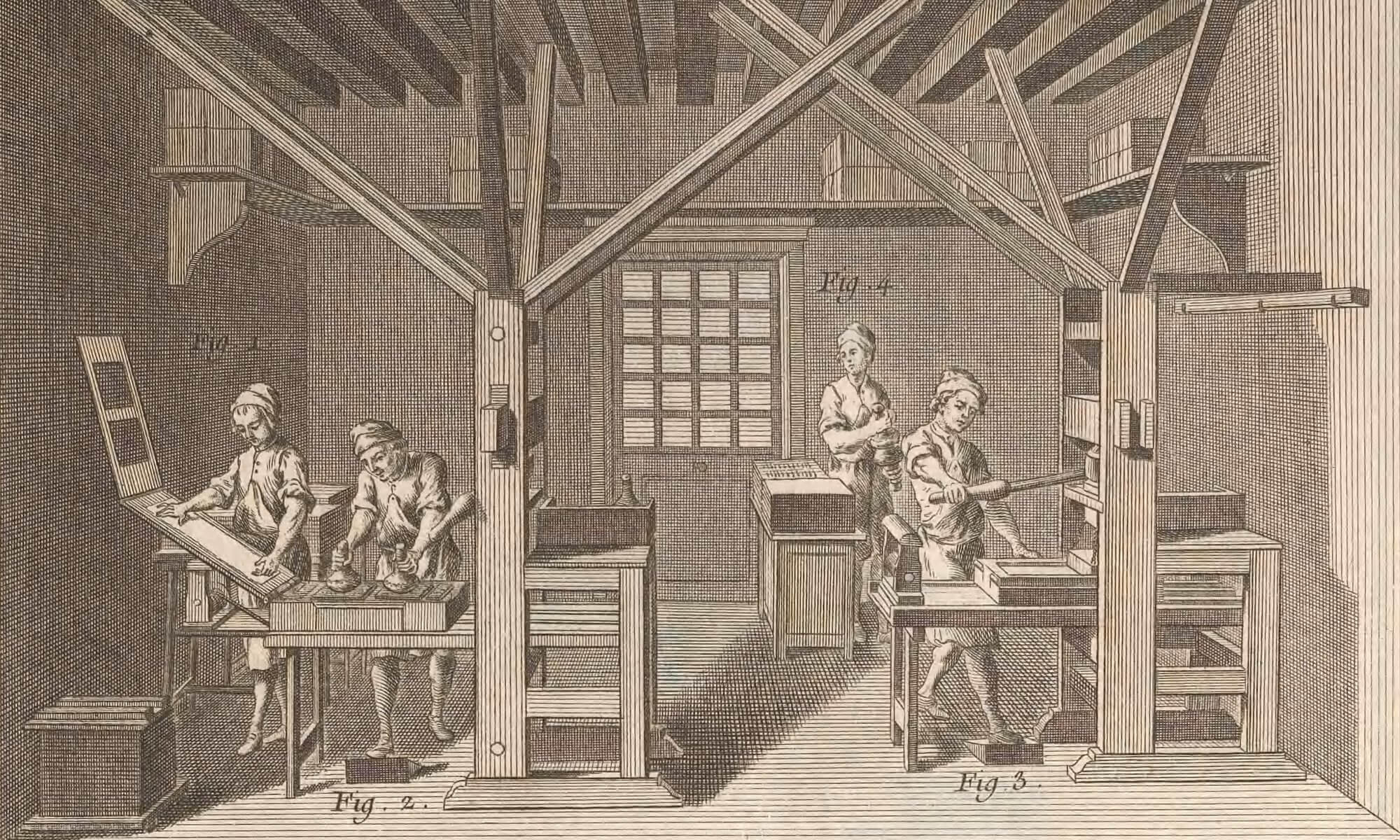Goal: This exercise will help you understand the format of early modern books by walking you through the steps of designing your own one-sheet quarto pamphlet.
Sometimes the easiest way to understand the patterns of signature marks and catchwords and headlines of early printed books is to lay them out yourself. In this exercise, you will make your own one-sheet quarto that starts on the first page, ends on the last page, and that includes the details of direction lines (catchwords and signature marks) and headlines (running titles and pagination or foliation) in the appropriate places. The important thing is not what your pamphlet says, but that it shows that you know the features highlighted below.
For this assignment, you will need to follow these steps:
- Write your text. It can be anything that follows a sequence: a story, a poem, a rant about social media. It simply needs to start at the beginning where you’d expect (usually on the first page or on the first leaf after the title page) and to stop at the ending on the last page. (In other words, don’t use an excerpt of a longer work that cuts off in the middle; this should be a complete work.)
- Cast off and impose your text. You’ll need to lay out your text in the appropriate places on a regular sheet of 8.5 x 11 inch or A4 paper so that, when correctly folded, the pages appear in the correct order.
- Publish your text. Bring to class at least one copy of an unfolded double-sided sheet of paper that I can fold into your final quarto.
Key elements that your quarto needs to include:
- Main text
- Signature marks in their appropriate places
- Catchwords
- Headlines (with either pagination or foliation)
- Imprint information (either on the title page or in a colophon)
Other useful information:
- Your quarto can be either print or manuscript. In either case, the imposition and the page elements will be the same. Since the point of this assignment is the layout of the page elements, not the fiddling with page design software, choose a method that’s easy for you.
- If you use a cut-and-paste method to lay out your text (as I did with the pdfs we folded in class), please run them through a copier to make a clean double-sided sheet.
- Don’t forget to leave margins so your text doesn’t get swallowed up in the gutter!
- Be careful with what “appropriate places” are for signature marks—think about how many leaves are typically signed in a quarto format and whether title pages are signed. Don’t forget to think, too, about what information is included in each signature mark!
